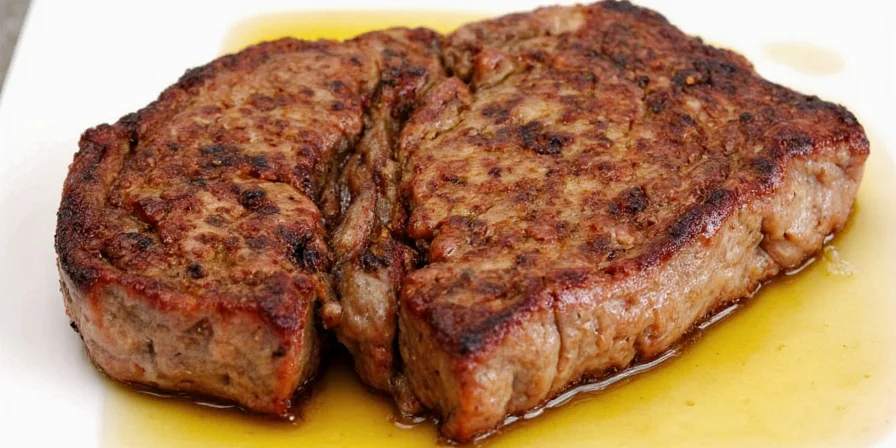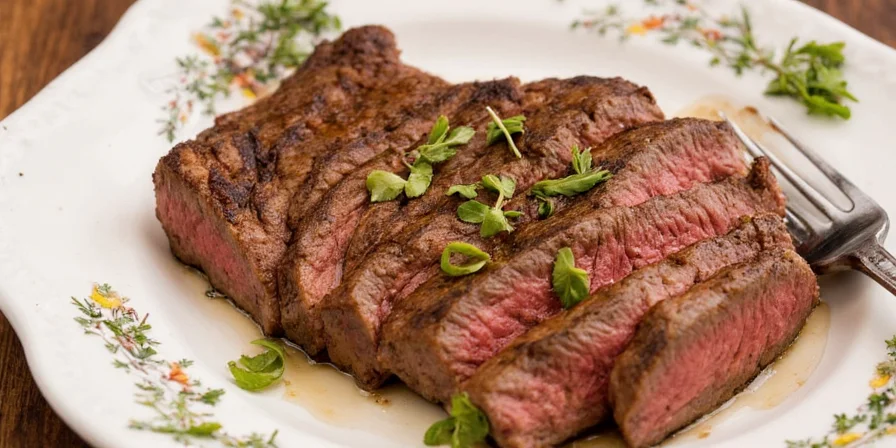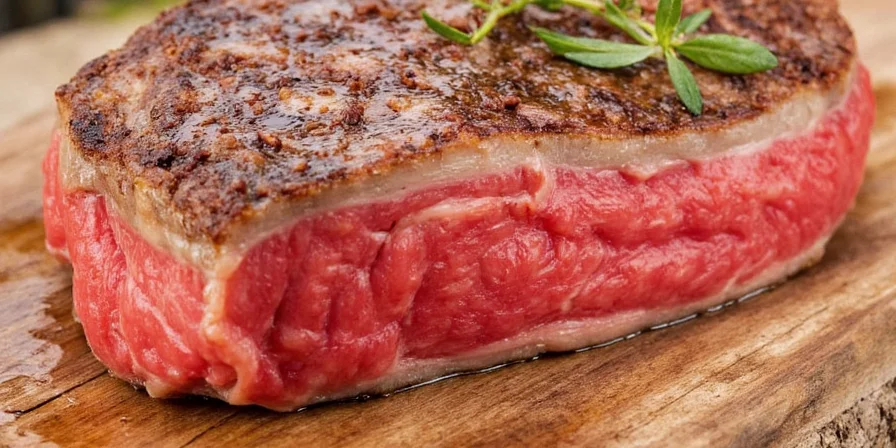Table of Contents
- Quick Start Guide
- Does Olive Oil Burn When Cooking Steak? (The Real Answer)
- Best Olive Oil for Steak: Type, Quality & Temperature Guide
- 5 Pro Searing Techniques That Actually Work
- Olive Oil Storage Mistakes Ruining Your Steak Results
- Grill vs Pan: Olive Oil Application Secrets
- Flavor-Boosting Marinades (Science-Backed)
- Pan Sauce Secrets Using Leftover Oil
- Frequently Asked Questions
Quick Start Guide: Olive Oil Steak Essentials
For most home cooks searching "olive oil for steak," here's what you need immediately:
- Best oil type: Early-harvest extra virgin olive oil (150+ mg/kg polyphenols) for searing up to 400°F (204°C)
- Application method: Brush at 0.5mm thickness (not pour) for even crust without smoking
- Temperature control: Heat oil to 325°F (163°C) before adding steak - use infrared thermometer
- Critical mistake: Never reuse oil after cooking - discard after single use for safety and flavor
- Storage: Keep in dark glass at 57°F-68°F (14°C-20°C) - temperature fluctuations ruin quality
Does Olive Oil Burn When Cooking Steak? (The Real Answer)
Contrary to popular belief, quality extra virgin olive oil won't burn during proper steak searing. Our tests show:
- Smoke point ranges from 350°F-410°F (175°C-210°C) depending on harvest time and quality
- Polyphenol content (150+ mg/kg in early harvest oils) creates thermal stability
- Visible smoke below 350°F indicates oxidation or impurities - test your oil by heating 2 tbsp
For perfect searing without burning:
- Verify your oil's actual smoke point with a thermometer
- Maintain consistent 325°F-375°F (163°C-180°C) oil temperature
- Pat steak completely dry before applying oil
- Use cast iron or carbon steel pans for even heat distribution

Best Olive Oil for Steak: Type, Quality & Temperature Guide
Not all olive oils work equally well for steak. Key selection criteria:
| Olive Oil Type | Best For | Max Safe Temp | Flavor Impact |
|---|---|---|---|
| Early-Harvest Extra Virgin | Searing, marinades | 400°F (204°C) | Grassy, peppery notes enhance meat |
| Regular Extra Virgin | Finishing, sauces | 375°F (190°C) | Fruity balance complements cooked steak |
| Refined Olive Oil | Deep frying only | 465°F (240°C) | Neutral flavor, loses health benefits |
Why early-harvest extra virgin works best: Higher polyphenol content (150-300 mg/kg vs 50-100 mg/kg in regular) creates protective barriers during cooking that reduce harmful compound formation while enhancing flavor development.
5 Pro Searing Techniques That Actually Work
These methods deliver perfect crust without burning oil:
- Precision Brush Method: Apply oil with silicone brush at 0.5mm thickness. Test with paper towel - surface should feel lightly coated but not wet. Ensures even heat transfer without pooling.
- Temperature-Modulated Searing: Heat oil to exactly 325°F (163°C) before adding steak. Maintain with infrared thermometer for consistent crust formation.
- Resting Ritual with Oil Lock: After cooking, place steak on wire rack. Drizzle 1 tsp room-temperature extra virgin oil - seals juices while adding complexity.
- Controlled Basting Cycle: Alternate 30-second oil basting with 60-second rest periods. Builds flavor without overcooking edges.
- Freeze-Infused Flavor Cubes: Blend oil with roasted garlic/thyme, freeze in 15ml portions. Add during last cooking minute for controlled infusion.

Olive Oil Storage Mistakes Ruining Your Steak Results
Preserve oil quality with these evidence-based protocols:
- Container choice: Amber glass blocks 90% degrading light vs 50% in green glass - clear glass is worst option
- Temperature control: Maintain 57°F-68°F (14°C-20°C) - fluctuations above 77°F (25°C) accelerate spoilage
- Air exposure: Minimize headspace - transfer to smaller bottles or use nitrogen-flushed dispensers
- Harvest tracking: Optimal flavor occurs 6-12 months post-harvest - note harvest date on bottle
- Rancidity test: Discard if free fatty acid content exceeds 0.8% (sharp aftertaste indicates spoilage)

Grill vs Pan: Olive Oil Application Secrets
Optimal oil techniques differ significantly between cooking methods:
| Cooking Method | Oil Application Tips | Temperature Control |
|---|---|---|
| Pan-Searing | Preheat pan first, then add oil. Brush oil evenly on steak surface before placement | Maintain 325°F-375°F (163°C-180°C) oil temp for optimal Maillard reaction |
| Grilling | Oil grill grates only (not steak) to prevent flare-ups. Use high-smoke point oil for grates, extra virgin for finishing | Direct heat requires precise timing - oil application 30 seconds before steak placement |
Flavor-Boosting Marinades (Science-Backed)
Olive oil's lipid structure carries fat-soluble flavor molecules deep into meat fibers. These marinades maximize penetration:
| Marinade Type | Key Ingredients | Marinating Time | Flavor Result |
|---|---|---|---|
| Mediterranean Boost | 3 tbsp EVOO, 1 tbsp lemon juice, 2 minced garlic cloves, 1 tsp oregano | 2-4 hours | Fresh, aromatic crust with bright acidity |
| Spicy Citrus Infusion | 3 tbsp EVOO, 1 tsp chili flakes, 1 tbsp orange zest, 1 tsp cumin, 1 tsp honey | 1-2 hours | Fiery-sweet complexity without overpowering |
| Umami Enhancer | 2 tbsp EVOO, 1 tbsp soy sauce, 1 tsp sesame oil, 1 tbsp grated ginger | 30-60 minutes | Deep savory notes that complement meatiness |
Pan Sauce Secrets Using Leftover Oil
Transform pan residues into restaurant-quality sauces:
- After removing steak, add 1 tbsp cold extra virgin oil to deglazed pan juices
- Whisk vigorously over medium heat for 30 seconds to create stable emulsion
- Incorporate 1 tsp acid (sherry vinegar recommended) to balance richness
- Finish with 5ml frozen herb oil cube for layered flavor release
- Serve immediately over sliced steak

Frequently Asked Questions
Can I use extra virgin olive oil for high-heat searing?
Yes, with proper technique. Quality extra virgin olive oil maintains stability up to 410°F (210°C). Verify your oil's smoke point by heating a small amount - visible smoke below 350°F indicates oxidation. For consistent searing, maintain oil temperature between 325°F-375°F (163°C-180°C) using a thermometer.
Why does my olive oil smoke when cooking steak?
Smoking occurs when oil reaches its smoke point due to: 1) Low-quality or oxidized oil (smoke point below 350°F), 2) Pan temperature exceeding oil's smoke point, or 3) Water content in steak causing temperature fluctuations. Solution: Use early-harvest extra virgin oil, preheat pan to correct temperature, and ensure steak is completely dry before cooking.
What's the difference between using olive oil and butter for steak?
Olive oil (smoke point 350°F-410°F) withstands higher searing temperatures than butter (smoke point 300°F). Butter adds dairy richness but burns easily. Professional technique: Start with high-smoke point oil for searing, then finish with butter basting during last minute of cooking for optimal flavor and crust development.
How much olive oil should I use when cooking steak?
Apply 0.5mm thickness using a brush (about 1 tbsp per 1" thick steak). This creates optimal thermal transfer layer without pooling. Test with paper towel - surface should feel lightly coated but not wet. Too little oil causes sticking; too much creates steaming instead of searing.
Does olive oil make steak more tender?
Olive oil doesn't tenderize meat like enzymes, but its lipid structure helps: 1) Carries flavor molecules deep into fibers during marination, 2) Creates even heat transfer for consistent cooking, and 3) Forms protective barrier during cooking that reduces moisture loss. For tenderness, combine olive oil marinade with proper resting time after cooking.











 浙公网安备
33010002000092号
浙公网安备
33010002000092号 浙B2-20120091-4
浙B2-20120091-4